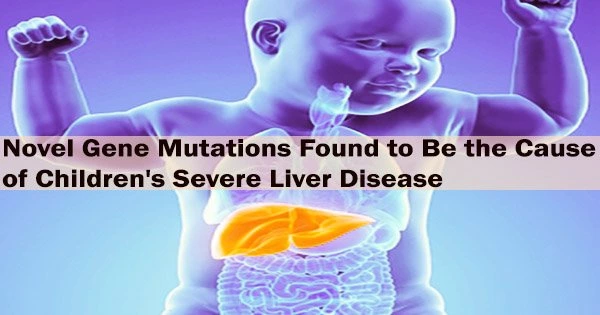The FOCAD gene is crucial for keeping a healthy liver, especially in children, according to recent discoveries. An early-onset, juvenile form of liver cirrhosis that can be fatal affects children who inherit loss-of-function mutations in the FOCAD gene, according to a study published in Nature Genetics.
The study was carried out by scientists from A*STAR’s Genome Institute of Singapore (GIS), in collaboration with hospitals and institutes across seven countries (India, USA, Saudi Arabia, Pakistan, Portugal, Brazil, and France).
According to estimates, liver disease is the fifth most prevalent cause of mortality in the world and is rapidly growing in importance for public health. 1.32 million deaths from liver cirrhosis, or more than 2% of all deaths worldwide in 2017, were reported in a systematic review from the Global Burden of Disease Study.
Typically discovered in later life, liver cirrhosis is thought to be brought on by environmental triggers like poor diet, viral hepatitis, or alcohol abuse.
The team used a combination of traditional techniques, including Mendelian genetics and animal models, with cutting-edge technology, including deep sequencing and cutting-edge gene editing tools, to determine that the FOCAD gene is essential for preserving liver health in humans. They worked with clinicians from all over the world on this project.
We report the clinical impact of recessive loss-of-function variants in the FOCAD gene, and provide evidence for the importance of the SKI mRNA surveillance pathway for liver homeostasis. The research also brings forth the first animal model of the human disease, as well as in vitro biological systems that are now being used as platforms to identify and validate new anti-fibrotic therapeutic targets.
Professor Bruno Reversade
This gene’s mutations result in a previously unreported early-onset form of liver cirrhosis. A previously unknown strong genetic component for liver disease is now known thanks to the discovery of a single gene, or monogenic, disorder that causes cirrhosis in children.
Further investigation revealed that FOCAD contributes to a molecular quality control system that facilitates translation, a critical cellular process for the production of proteins.
Comparatively to other cell types, it was discovered that the hepatocytes, the primary cells of the liver, heavily rely on this process. This translation-dependent quality control system has never been connected
The team also discovered a cytokine, CCL2, that is overproduced in FOCAD deficient patients and may play a key role in the progression of liver cirrhosis.
Dr. Ricardo Moreno Traspas, a postdoctoral fellow from the Laboratory of Human Genetics and Therapeutics at GIS, and first author of the study, explained, “FOCAD mutations lead to an overproduction of a number of proteins that may be key drivers in the progression of the disease. One example is the signalling mediator, CCL2, that attracts immune cells and promotes liver inflammation. Drugs that target this, or similar candidates, are potential therapeutic intervention points for cirrhotic patients.”
Prof Bruno Reversade, Senior Group Leader at GIS and corresponding author of the study, commented, “We report the clinical impact of recessive loss-of-function variants in the FOCAD gene, and provide evidence for the importance of the SKI mRNA surveillance pathway for liver homeostasis. The research also brings forth the first animal model of the human disease, as well as in vitro biological systems that are now being used as platforms to identify and validate new anti-fibrotic therapeutic targets.”
Prof Patrick Tan, Executive Director of GIS, said, “The knowledge and tools generated in this study have the potential to aid in the development of innovative therapies for more common forms of liver diseases such as fatty liver disease and liver cancer. Our clinical data will also help clinicians to identify new patients with this syndrome, better understand the cellular and molecular mechanisms of the disease, and hence, provide a more accurate diagnosis, prognosis, and treatment.”
















